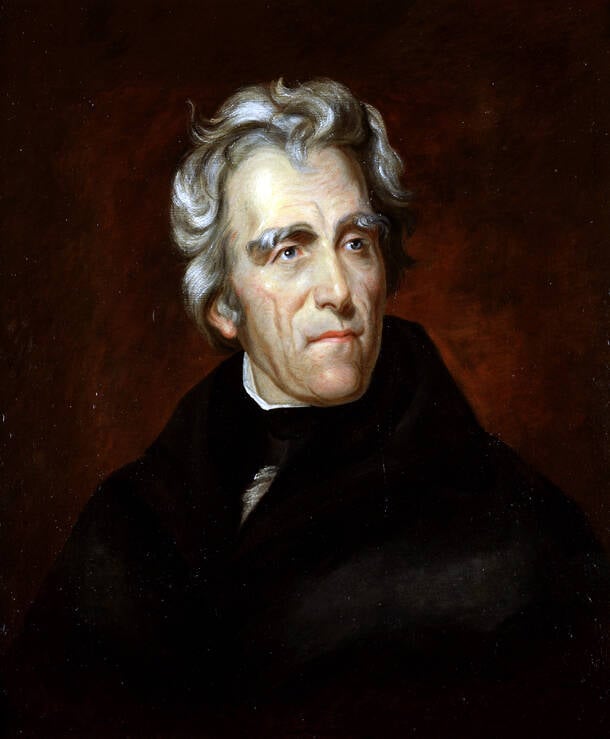When Richard Lawrence tried to assassinate Andrew Jackson in 1835, he failed in spectacular fashion — then Jackson fought back.
Andrew Jackson once declared: “I was born for the storm; calm does not suit me.”
Throughout his life, Jackson was no stranger to close calls. The scrappy president from Tennessee had been a boy when the Revolutionary War broke out, and he cut his teeth fighting against the British. When he was captured in 1781, a British soldier slashed him for refusing to shine his boots, giving Jackson scars on his hand and face. As an adult, Jackson survived a duel that left him with a bullet in his chest, and he was once shot so badly during a Nashville street brawl that he almost lost one of his arms.
Nothing quite compared, however, to the moment that Jackson survived an assassination attempt in Washington, D.C. on January 30, 1835.

Public DomainAndrew Jackson was a controversial president and the first to be targeted for assassination.
At that point, no U.S. president had ever been the target of an assassination attempt before. But Andrew Jackson was unlike any other president in American history. Though he’d become a hero during the War of 1812, Jackson was a deeply polarizing figure from the start.
In the election of 1824, the politically inexperienced and uneducated Jackson cut a different figure than his competitors, including John Quincy Adams — the Secretary of State and the son of a former president, John Adams. Despite this, Jackson ran a surprisingly popular campaign and only lost the race to Adams when it was thrown to the House of Representatives after none of the candidates garnered a majority of the electoral vote. Jackson accused Adams of striking a “corrupt bargain” and ran again in 1828.
This time he won — to the abject horror of many in the political establishment.
As president, Jackson pursued a number of divisive policies, from removing high-ranking government officials who he claimed were corrupt (and replacing them with his supporters) to his opposition to rechartering the Second Bank of the United States.
Many of Jackson’s policies were so controversial, in fact, that his detractors (led by Kentucky Senator Henry Clay) formed a new political party. They called themselves the “Whigs,” which prompted a direct comparison to the English anti-monarchy party of the same name. It also prompted a comparison between King George III of Britain, the hated British monarch who’d ruled during the Revolutionary War, and Andrew Jackson, who was dubbed “King Andrew” by his opponents.

Public DomainAn 1832 cartoon depicting Jackson as “King Andrew.”
With political vitriol swirling in the air, Andrew Jackson became the obsession of a mentally disturbed house painter named Richard Lawrence, who took it upon himself to kill the 67-year-old president on a cold January day in Washington, D.C. But though Lawrence was armed with two pistols, and Jackson only with a cane, the president survived.
This is the story of the assassination attempt against Andrew Jackson, and how the president beat the odds — yet again — to live another day.
Learn more about the music used in our podcast. History Uncovered is part of the Airwave Media network. Learn more about your ad choices by visiting megaphone.fm/adchoices.






